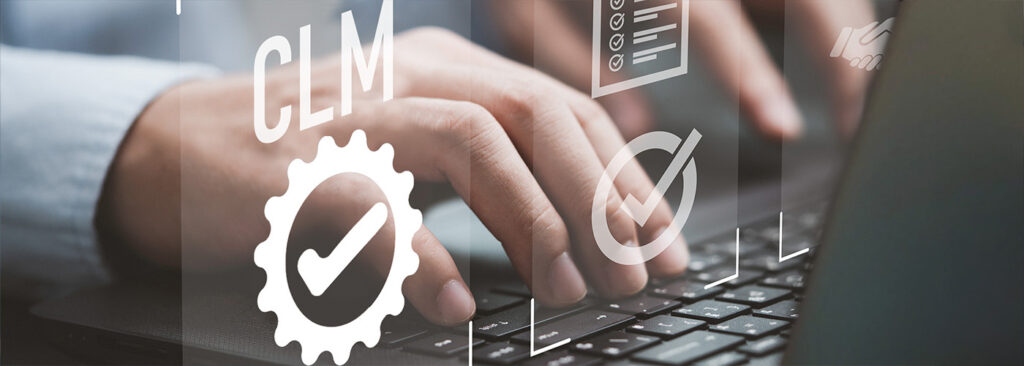This article by Naseeha Machingal, LegalEase Solutions, was published on February 22, 2022 in edition of the LegalTech News
What the iCertis suit illuminates is the fact that the contract lifecycle management purchase process is a long journey requiring deep collaboration between internal stakeholders and CLM vendors to be successful. Therefore, advance planning is critical.
Selecting a contract lifecycle management (CLM) platform is not as simple as choosing the program with the flashiest features. Despite the vast buffet of benefits contract lifecycle management software can offer to different departments, company representatives often walk into sales meetings not quite knowing what they need out of their contract lifecycle management vendor to benefit the entire company. CLM vendors, on the other hand, are providing robust presentations on their programs’ capabilities without truly diving into their prospects’ needs and pain points. These approaches, unfortunately, can backfire for both enterprises and CLM vendors.
The Change Healthcare Operations, LLC v. iCertis, Inc. lawsuit filed in late 2021 is a clear illustration of the potential risks for both sides. The complaint states that Change Healthcare Operations (CHO) commissioned iCertis to create a bespoke, on-premises CLM program under a service contract worth more than $5 million. CHO alleges that over the course of the implementation, iCertis failed to make its employees available to CHO staff, and fell through on promises related to providing adequate documentation and training. Additionally, CHO claims that it needed to rework 75% of iCertis’s deliverables at substantial cost and overtake template harmonization and technical tasks that the service agreement had assigned to iCertis. Through its suit, CHO seeks cancellation of the contract and restitution.
Preparing for a Successful CLM Implementation

What the iCertis suit illuminates is the fact that the contract lifecycle management purchase process is a long journey requiring deep collaboration between internal stakeholders and CLM vendors to be successful. Therefore, advance planning is critical. General counsel (GCs) are uniquely positioned within the company’s power structure to lead this process, round up the right stakeholders and empower critical operations voices to contribute to and guide the process. Here are some of the ways they can work with other key organizational players to accomplish this.
1. Determine the company’s CLM preparedness.
General counsel should first inquire whether their organizations and team members are even ready to consider a CLM implementation based on the status of their templates and the volume of their contracts. This information can help dictate how the company manages not only its CLM investment decisions but also its rollouts. Ideally, the rollout an organization pursues should be mindful of the company’s needs and stakeholders’ concerns. Therefore, if an organization’s primary pain point is contract drafting, it may make sense to focus on CLM solutions or a phased rollout that prioritizes launching those features.
2. Organize a CLM/legal transformation team.
General counsel must ensure the organization has a foundational legal transformation team to advice on CLM needs and implementations. Ideally, this team should balance legal operations professionals and traditional stakeholders, including department heads. Having a dedicated legal ops champion, for that matter, is critical because that person will look for efficiencies, assess opportunities to automate contracting, and determine tactics for leveraging contract lifecycle management platforms accordingly. Above all, this team should evaluate whether the organization possesses what it needs to proceed with effective CLM implementation. This includes ensuring all necessary playbooks, templates and other foundational capabilities are in place prior to implementation.
3. Assess the organization’s true pain points.
As General counsel assemble their legal transformation teams, they should also initiate discussions with the department heads who have the most exposure to the company’s CLM process. This will likely include personnel in the company’s procurement, business and finance divisions. When GCs meet with these individuals, they should collect as much information as possible about their specific needs and determine how a contract lifecycle management platform can best address their pain points. After all, companies will only attain maximum value from their CLM solution if all stakeholders are on the same page regarding how a CLM can help them on a day-to-day basis.
4. Request customer success stories tailored to the company.
General counsel and their chosen legal transformation teams should also ask prospective CLM providers about their customer success strategies, governance programs and training roadmaps. It’s important to note, however, that every success story a vendor shares may not be relevant to the organization’s specific circumstances or needs. Therefore, instead of requesting the best customer success stories from vendors, GCs should instead ask for more tailored referrals from similar-sized organizations with similar pain points, as well as from companies that migrated from the same platforms. Requesting this information will allow GCs to more accurately predict how specific CLM systems could grow and adapt with their teams.
Steps to Take After Implementation

The transformation team’s involvement does not stop after implementation. Instead, it must actively participate in the post-implementation process by holding monthly internal check-ins and with their CLM account representatives. These discussions should track enterprise-wide usage of the platform and implementation improvement opportunities. It is also important to pay attention to the organization’s change management process, which can shine a light on not-so-obvious contract lifecycle management needs.
This is also the time to assess how staff are using the contract lifecycle management and whether it has improved or impeded contract management. This assessment should also engage the company’s super users as they will have valuable perspectives. With this knowledge in hand, the legal transformation team can make decisions about whether additional training is necessary to encourage more widespread adoption.
The organization’s partnership with the CLM vendor should also remain ongoing and collaborative with robust communication regarding how the platform is functioning. In-house teams should also regularly track and share their monthly CLM usage metrics internally and with their vendors, and ask for dedicated support representatives and quarterly performance reviews to gauge progress and troubleshoot post-implementation issues.
Ultimately, there is no secret formula for a successful contract lifecycle management implementation. As iCertis suggests, however, companies and their transformation teams must ensure they thoroughly understand their CLM end game. Working closely with vendors and internal stakeholders, GCs are in a prime position to steer the purchase process and leverage their roles to help enterprises mitigate the likelihood of implementation failures.
Reprinted
With permission from the February 22, 2022 edition of the “LegalTech News” © 2022 ALM Media Properties, LLC. All rights reserved. Further duplication without permission is prohibited. ALMReprints.com – 877-257-3382 – reprints@alm.com.

Naseeha Machingal is Director of Client Success at LegalEase Solutions LLC.

